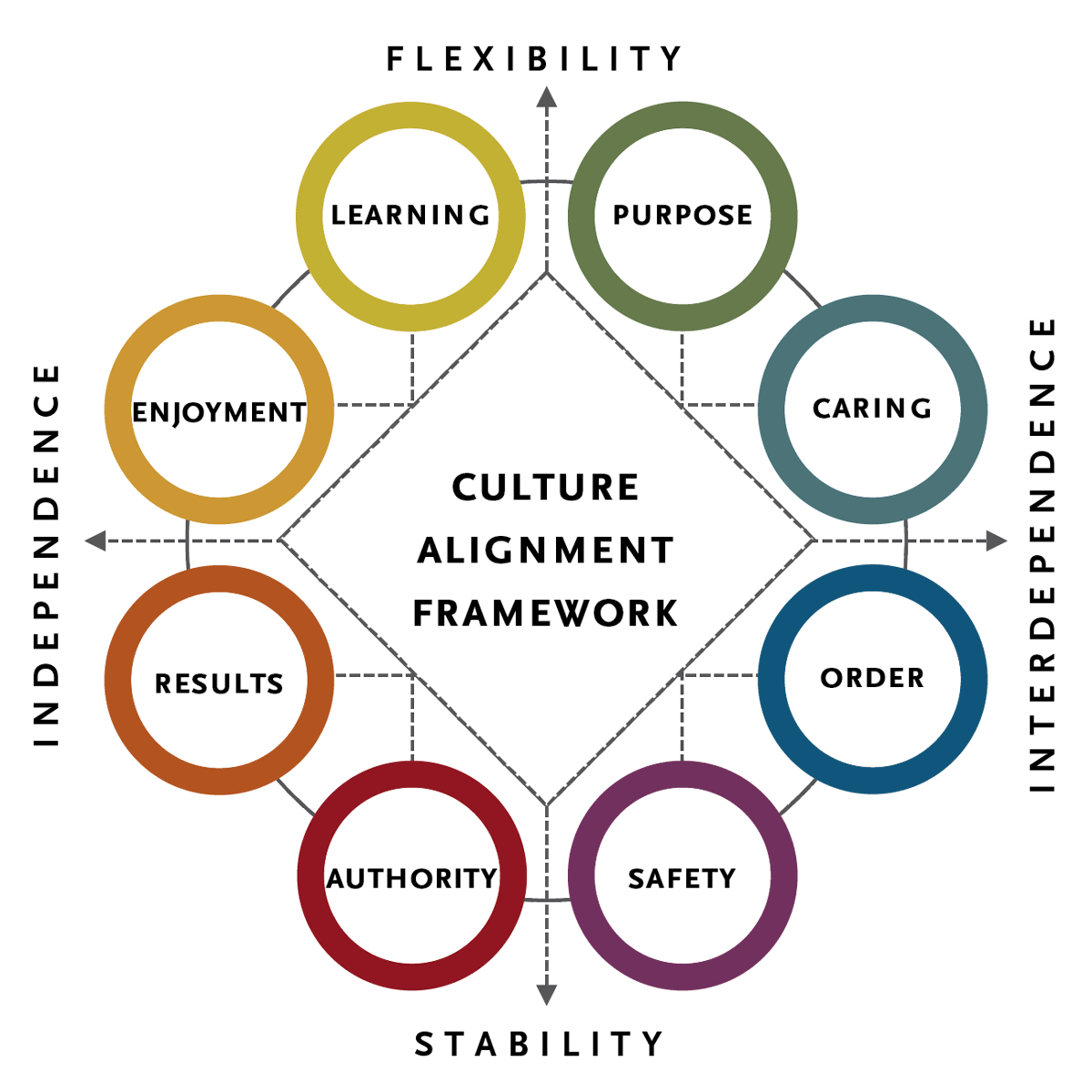
Build Lasting Leaders, Robust Relationships, And A Cohesive Culture Within Your Small Business
In your small business, do the people in it take top priority? Do you and your team sustain strong relationships that go beyond the work being done? Is there a culture within your organization that would be devastatingly missed if one were to leave it?
And if you do have all of these in flying colors, are they self fostering and healing or are they utterly reliant on you as the business owner (or some outsourced resource)?
If you want to build a strong scalable company that effectively grows and lives beyond your capability, you must have a vision for the talent with your organization. These people that work for and with you must know and see how them growing your business will help them grow as a person, progress vocational, and strengthen themselves financially.
When you build a strong and clear win-win mission on this foundation, you’ll build an unstoppable force to do things far beyond what you or your team expect.

A Vision For Talent Development
If there is one thing, especially in the later years at Noodlehead Marketing, that I'm gifted and experienced at, it's working with people. I’m a Jack-of-all-trades but a master of people.
And since we humans are complex individuals, even more so when interfacing together (causing even relationship-oriented people like myself to always be learning), this is highly helpful with developing people. When it comes to teaching, caring, and sharing, It's something I'm both naturally gifted at and have spent a great deal of energy to get better at (because I can still make terrible mistakes in this realm).
When we shut down the company in 2014, one of the most devastating consequences was disbanding our astounding community and culture; like walking out of a slice of heaven.
When I reflect back at this community, and the numerous others I've been involved in as either a participant or leader, there are numerous factors at play, but the core of what must be fostered is prioritizing (loving) others merged with a desire to grow ourselves. And to follow this up by perpetuating this spirit to permeate the team as it expands. Failing to do so will lead to contractions and, if not corrected, cultural death.
Imagine our life’s journey as a staircase we're moving up. As we're climbing up, there is someone a step ahead that is extending us a hand while another person is a step below in which we too help them upward (should we choose). Together we move up the staircase towards building a better self and community. This talent development vision is encapsulated with the following statement:
A collective of self-starting learners & teachers.
This vision pushes us to live as both the student and teacher, always living as both. The recognition that we are incomplete and there is a better future version of us ahead equips is to move past our ego and towards something better. And, it’s application triggers us to appreciate that others need our support and we’re to proactively give it.
When you build a cultural like this within your organization, nothing will stop it from effectively fulfilling your (clearly articulated) company mission (towards its vision). And the results you really want will follow.
The Talent Development Mission & Strategy
While this vision is exciting and compelling, it’s the strategic details that equip us to bring this vision to life.
The talent development mission to do this is also a three-pronged strategy for directing specific activities we can do to help enable this target vision.
Here is the Talent Development mission as I see it: Building lasting leaders, robust relationships, and a cohesive culture.
We focus on the individual, the dynamics between them, and the group it makes up. Let’s dive in and explore all three, starting with the first.
"...we learned that quality collaboration does not begin with relationships and trust; it starts with a focus on individual motivation." - Carlos Valdes-Dapena

1. Lasting Leaders
"Great leaders last because they lead themselves first." - Andy Stanley
One of the core challenges of a small business owner becoming anything other than a solopreneur (should they choose the growth route) is the ability and maturity to scale it beyond themselves. They must build systems and trust the right people to operate those tools and processes with excellence.
And because business is a complex context with change coming at it from all directions, static nongrowing people in business won’t allow the company to adapt as the complexities unfold over time. In fact, they’ll arrest or severely slow the growth.
To truly build a business that lasts means developing people who will grow, mature, and be equipped to adapt the company in profitable (relational and financial) ways. You must also find and mentor leaders that will find and guide others.
And the highest level we can reach is to not only do this for the sake of growing the business but for improving the destiny of the people we’re entrusted to lead for a season. Eventually, all who work for your business will go on to lead other projects, departments, companies, and communities and the impact we have on them (positive or negative) will shape and matter to those people in their wake for generations.
Effectiveness
And, while we may have good intentions and do our best to make good leaders, what we want to do is lean into evidence-based practices for developing people into more effective leaders. For this, we'll want to tap into the research of the constructive development framework, backed by decades of research illuminating the five levels of maturity we humans go through.
"Fortune 100 companies... are looking for leaders who knew who they were and what they stood for, and who had the ability to communicate those things - in other words, Level 4 leaders... The reason there is such a jump at level 4 is because this is the first stage where you can take ownership and responsibility for the use of the influence and factors that defined you at the previous levels." - Keith Eigel, The Map
It is those who have faced the external tensions and through the fire of challenging circumstances defined themselves from the inside-out. They've channeled their complaints into understanding what they fear, what they believe, what they value and why. The winds of external forces that often lead to waste and ineffectiveness in the early levels 2 and 3 are better sustained and often redirected into a positive force with level 4 (and beyond) leaders.
"The Research supports the anecdotal evidence that many researches over the past decades have purported to be true: first, the higher your level, the more effective you are as a leader; and second, you don't truly become an effective leader until you reach a place of self-authorship at level 4." - Karl Kuhnert, The Map
Our efforts in this realm should be to help our people understand who they are, where they are going, and how to effectively bring others along in the process. Strong grounded leaders will grow your business. And when you help them become that stronger leader, you're making your business better and setting them up for their best possible future.
Ultimately, for the level 4 leaders we help develop and those we hire into the organization, we'll want to help move them forward to level 5, which is a self-transforming leader.
Lasting leaders are not just taught tips and tricks for a situation but are fundamentally made better so that they become the source of tips and tricks for others following their lead.

2. Robust Relationships
"Employees’ working relationships were long determined to be crucial to their overall well-being and performance ratings at work... The [new] findings demonstrated the positive effects of high-quality workplace relationships on working manners including higher commitment, lower level of reported job stress, and increased perception of social impact. Notably, the results also demonstrated that relationships between leaders and their staff make a significant contribution to the quality of workplace relationship and performance." - The Impacts of the High-Quality Workplace Relationships on Job Performance
Effective organizations can only go so far as a fragmented team of individuals, even high performing ones. To elevate their performance, improve well-being (including less stress), and enhance their commitment to the organization, individuals must build strong relationships and learn how to effectively collaborate.
These relationships are also additional conduits contributing to the first pillar of building lasting leaders. We can teach and be taught, working together to move forward on the leader level spectrum, but how we go about fostering relationships and cultivating collaboration matters a great deal.
"Even a mundane job can be meaningful if you do it alongside people you care about and connect with." - John Coleman
Effective Collaboration (& Team Building)
"Most corporate team building is a waste of time and money..." - Carlos Valdes-Dapena
There is collaboration and then there is effective collaboration. Recall your team projects in school to remember how both would unfold.
When we’re operating in a high-performance culture, we’ll lean towards individual contributions if we don’t clearly see why collaboration is needed. In the following quote, Carlos illuminated what this looks like.
"At the core of this framework are two questions to pose to any team. The first: Why is their collaboration essential to achieving their business results? And second: What work, which specific tasks, would require collaboration to deliver those results?... Their team purpose had focused their collaboration on the things that mattered most to the results they planned for. The sense of accountability for their work together, based on the agreements they forged, made their working relationships far more productive than they had been. At Mars, we learned that to get people to work together, we had to let them figure out how that would actually improve results." - Carlos Valdes-Dapena
With strong collaboration, what matters most is clarity around the direction, and how working together will best foster that. Metaphorically, I imagine collaboration as a vehicle where we each play a define and focused goal to move the vehicle (that we couldn’t otherwise move forward individually) towards the end game. And, It’s through effective collaboration where reliable relationships are forged, as Carlos expands in his following comments.
"Strong relationships and trust do matter to collaboration, but they are not the starting point. They are the outcomes of dedicated people striving together. Connecting collaboration to the motives of success-minded team members is what unlocks productive teamwork." - Carlos Valdes-Dapena

3. Cohesive Culture
“Culture Eats Strategy For Breakfast 🍳” - Unknown
Informed by the founder and lasting leaders while influenced by robust relationships, culture synthesizes the underlying tensions that often inform and direct the behavior of those within an organization. Ideally, they elevate the participants to a higher level of virtuous performance (negative cultures deteriorate the organization).
Tap into the power of culture by first understanding it. According to the Harvard Business Review (via SpencerStuart), there are four quadrants and eight styles of culture. The four quadrants of culture are as follows:
- Flexibility
- Stability
- Interdependence
- Independence
Within these four cultural quadrants lies eight distinct styles of culture, all listed below, and highlighted in the preceding graphic.
- Caring
- Purpose
- Learning
- Enjoyment
- Results
- Authority
- Safety
- Order
As we can see in the graphic, some of these cultural tensions are diametrically opposed. Safety and learning, results and caring are two sets of styles that flare up tensions within an organization. Ideally, we allow for these tensions as opposed to resolving them and losing a style of our culture that matters.
“Culture expresses goals through values and beliefs and guides activity through shared assumptions and group norms.” - Harvard Business Review
And different types of cultures leaning more heavily in certain stylistic preferences are needed based on the type of work being done and the environment in which it’s taking place. Ideally, you’ll want to best understand these culture levers, which are most important to your mission, and harmonize them with the less important styles to ensure a more holistic culture that moves your organization forward.
Language, example, and stories are three powerful ways to make this happen.
Shape Culture with Language, Living Examples, and Stories
The founder's (and leaders') example, the recurring stories that are told, and the language used throughout the organization are the three ways we can most effectively impact a culture.
People learn what to do from what they see. The example founders set for our staff informs and influences how they will act and respond to their own situations and challenges. So, as wonderful as you want your staff, vendors, and customers treated, it’ll be your example of how you actually treat them that sets the precedent. "Do as I say, not as I do" won’t cut it as the leader of your company. And often what you fail to model is also the same thing you’ll struggle to hold others accountable for.
Outside of your example lies the next lever for cultural influence: stories. We humans love to share and listen to stories and companies are no exception. In fact, you can learn a lot about the types of stories that are told within an organization. The stories we tell inform others what we value, how we look at responding to challenges, and what lessons are most important. As a leader of your organization, you’ll often set the stage for stories and your team will reshare and synthesize their own experiences into them. It’s an exciting thing to witness others organically perpetuating your stories and sharing their own to help cast the vision and enforce the core values.
And from those stories and how we talk, we also shape a language around the organization. How do we see and talk about distractions (as an example)? What words do we use to describe and shape our behavior? How do we talk about challenges and failures? Are they in ways that encourage taking responsibility or blaming others?
A friend of mine once told me about how he struggled to understand the lawyer's perspective and how they saw the world. But at some point in his work, he was forced to work with them on a project and came to learn their language, the definitions of the same words he’d use in different ways, and the application of their language in contracts. This process gave him an epiphany and visibility into this other world. The language of the law shaped those in it, and for the first time, he could clearly see it through their eyes. Now he got it.
The easiest and most practical way to consider this variable in your organization is the questions and confusion that comes from new hires. While you all may speak English, you’re obviously speaking a language they must learn and adapt to as they integrate with your team. Eventually, they learn to speak your organizational language, and with it comes a communication speed impossible without a shared language.
An Effective system for recruiting and retaining talent.
“Leading with culture may be among the few sources of sustainable competitive advantage left to companies today. Successful leaders will stop regarding culture with frustration and instead use it as a fundamental management tool.“ - Harvard Business Review
A cohesive culture, filled with robust relationships, and a team of lasting leaders attract aspiring talent, high performing experts while also retaining the wonderful people you bring (and want to keep) into your organization. While you want to pay your people well, it’s these other factors that will play a larger factor in your team sticking around for the long run, and working hard to generate the needed results.
Don’t Neglect Culture Or It’ll Decay (Or Worse, Transform Into A Monster)
“Indeed, many either let it go unmanaged or relegate it to the HR function, where it becomes a secondary concern for the business. “ - Harvard Business Review
Just as culture can be a wonderful thing, a negative one can quickly become a black hole that chews up and spits out people. And a toxic culture that catches fire can quickly cause more problems in an already struggling business.
Often, this stems from the owner or some prominent leader in the organization. If you see this unfolding, it’s your duty to change yourself and to directly address it head-on with your staff. If it goes too far, it can be highly challenging to reign things back in the right direction.
The Risks Of Talent Development
"A CFO asks a CEO: What happens if we invest in developing our people and then they leave us? The CEO responds: What happens if we don’t and they stay?" - Peter Baeklund
There is always a risk people will leave, including those you pour into. Some will leave because they are neglected, the organization is a chaotic mess, or because your wonderful company is not the vehicle to help them accomplish their vocational and personal objectives in life.
While there is always a risk in team members leaving, the upside of leveling them up, fostering strong relationships, and cultivating a powerful culture far outweigh the possibility of their departure. And, if you align with a higher calling beyond just your organization, you can lean into the fact that you helped better equip them for the next stage in their journey. Your generosity will have a long-term legacy impact for the better.
Another risk of intentional talent training comes with the enlightenment of your people that soon follows the development path. If the team grows and the company does not grow with them (in operational maturity), they will outgrow the business (and either be perpetually frustrated, leave for an organization that does cater to this growth, or start their own venture).
When we embrace the reality that people are only within their organizations for a season, we can look at our company as a springboard for their journey. And while they are in the organization, they help spring it forward towards the vision.
This Mission In Action
So, what are some practical ways to action these insights? Here are several ideas to get you started.
- Prioritize Ideal Culture Styles: Using the styles conveyed above, run through an exercise to determine the styles that are most important to the type of business you are operating and what the owner and leadership expect from the staff. This will help hire the right people while also giving clarity to those already within your organization. And lastly, the exercise illuminates where the tension points will come with the team.
- One-On-One Time: The owner of the business should be spending time with his staff on a regular basis. The time spent should be higher with those in higher positions. Leaders should follow suit by meeting regularly with those they lead and manage.
- Small Groups: Pockets of an organization ought to be getting together for lunch or possibly a loosely guided learning time. Doing it cross-departmental allows for breaking down organizational silos. These times can help foster relationship building while also enabling the staff to develop as lasting leaders by sharpening each other.
- Large Group Formal Teaching: Whether it is a lunch and learn or an afternoon tea time, bring together a large amount of your staff (or all in a few different timed sessions) for formal teaching on a concept. It could be about purpose, margin, management, constructive development theory, or other topics relevant to the organization. These optional, but highly encouraged times allow for people to explore topics and discuss in ways they may not do on their own accord. And, it helps foster relationship building as people open up, while also shaping the culture by modeling and teaching what is important to the organization.
- Public Discussion & Sharing Forum: As individuals throughout the organization listen to podcasts, watch videos, or read articles, they can be sharing them individually with each other or in some public channel where all team has access like Slack or Microsoft teams.
- Right Now Media @ Work: With one of my clients, we have access to the entire library of videos on a large array of personal, professional, and organizational topics through Righ Now Media @ Work. While some of it is freely available online on other channels, they also have a great deal of exclusive content only available to members. The platform also provides ways to deliver and track assignments of specific content to individuals or the entire team.
Measuring Success
Talent development, relationships, and culture can all be a tricky thing to nail down in a quantitative way, but there are some helpful insights and indicators that help us get a pulse check of what's going on, how things are progressing, and what's working (not working). Here are several ideas to help your exploration.
- Commitment Level Checkpoint: At the beginning, and at a quarterly or annual cadence, check-in with the staff to determine how committed they are to active learning, and mentoring others. Measure how this grows (or shrinks) over time.
- Topic Pulse Check: Survey your staff to find out what topics (personal, professional, or organizational) are of utmost importance and relevance to them, their team, their department, and the company. This will give you visibility of what's the trending topics and likely underlying organizational problems.
- Satisfaction Pulse Check: Regularly ask simple questions through surveys to find out if people are satisfied with their role in the business, the company as a whole, and whether they'd refer people to work at your organization. As time goes by, dive deeper into topics about the culture, vision, values, pay, benefits, and other issues that matter to the team.
Wrapping Up
People, their relationships with others, and the way your entire staff interfaces matter a great deal. Understanding the motivations and tensions that affect the individuals and collective provides you with clarity on how best to influence these factors in the most beneficial and positive way. When you do it right, you'll not only build leaders up, enhance satisfaction, and provide purpose, you'll also generate the results that financially make it all possible.
Other Resources on Talent Development
- Article: Culture Eats Strategy For Breakfast. So What's For Lunch?
- Article: To Be Happier at Work, Invest More in Your Relationships
- Article: Feedback Is A Gift That Keeps Giving
- Article: Zappos Culture Design Canvas
- TED Talk: It’s not what you say, it’s what people hear. To effectively communicate, we need to change the words we use that alienate people we disagree with.
















